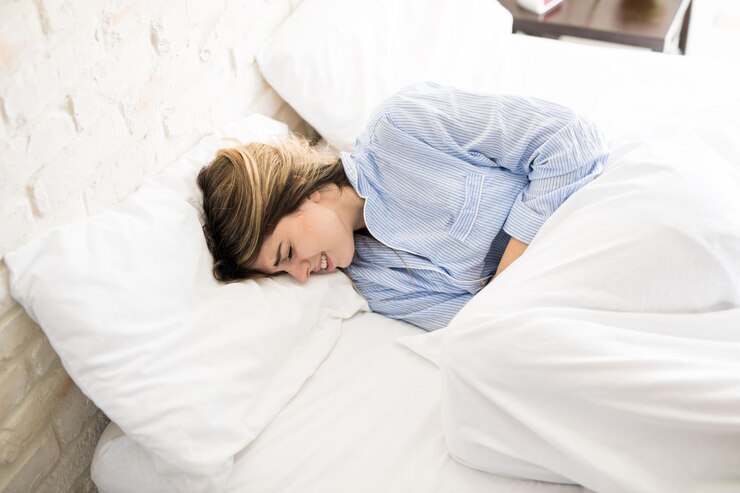This article is about “How To Relieve Bad Period Cramps”. Various heat therapies, dietary adjustments, exercise, hydration and over-the-counter pain relief can improve blood circulation, provide soothing effects, reduce severe pain and discomfort.
Period cramps, also known as dysmenorrhea and menstrual cramps are pain and discomfort that many individuals experience just before or during menstruation (their monthly period). These cramps are caused by the uterus contracting to help shed its lining, which occurs when an egg released during ovulation isn’t fertilized.
Table of Contents
4 Effective Remedies For How To Relieve Bad Period Cramps.
1. Ancient remedies for how to relieve bad period cramps
Ancient methods to relieve period cramps often focused on natural remedies and practices that were passed down through generations. While these methods may not have scientific validation, they were based on observations and experiences of individuals over centuries. Here are some ancient methods that have been used historically:
Herbal Remedies:
- Ginger: Known for its anti-inflammatory properties, ginger was often brewed into teas or consumed in various forms to alleviate menstrual pain.
- Cinnamon: Used for its warming properties, cinnamon was sometimes included in teas or consumed with honey to relieve cramps.
- Fennel: Fennel seeds were chewed or brewed into tea to help relax muscles and relieve bloating associated with menstrual cramps.
Aromatherapy:
- Essential Oils: Oils such as lavender, chamomile, and clary sage were used in aromatherapy to promote relaxation and reduce stress, which could help alleviate cramps.
Heat Therapy:
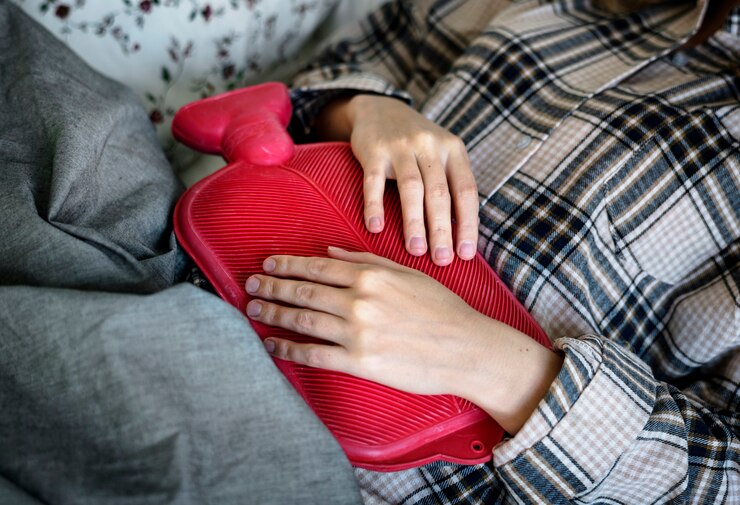
- Applying heat to the lower abdomen was a common practice in ancient times and is still widely used today. This could involve using warm compresses, hot water bottles, or sitting in warm baths.
Massage:
- Gentle abdominal massage was believed to help improve blood circulation, relax muscles, and reduce cramping.
Dietary Adjustments:
- Ancient cultures often recommended specific dietary changes during menstruation, such as avoiding cold foods and drinks and consuming warming foods like soups, broths, and herbal teas.
Physical Activity:
- While not always explicitly documented in ancient texts, moderate physical activity such as gentle stretching, walking, or yoga could have been practiced to alleviate cramps by promoting circulation and releasing endorphins.
ACCUPRESSURE MAT
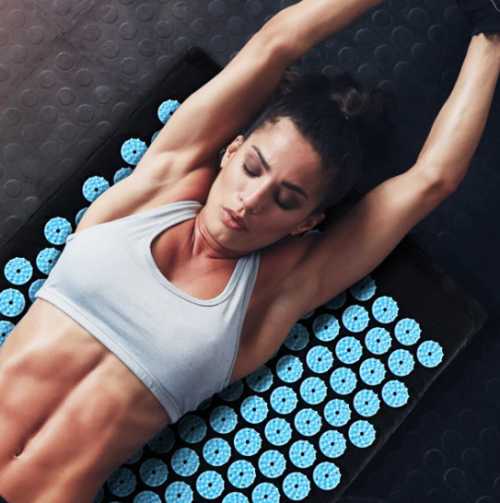
Acupressure and Reflexology:
- Traditional Chinese Medicine and other ancient healing systems included techniques like acupressure and reflexology, which involve applying pressure to specific points on the body (such as the hands and feet) believed to correspond with organs and systems, including those involved in menstruation.
Summary:It’s important to note that while these ancient methods may have provided relief for some individuals, their efficacy has not been scientifically proven. Additionally, some practices may not be suitable for everyone or could interact with modern medications or treatments.
2. Ayurvedic Remedies
Ayurveda, the traditional Indian system of medicine, offers several methods to relieve period pain based on balancing the body’s doshas (vata, pitta, and kapha) and promoting overall well-being. Here are some Ayurvedic approaches to alleviate period pain:
Dietary Adjustments:
- Nourishing and warm Foods: During menstruation, Ayurveda recommends consuming warm, cooked foods that are easy to digest. This includes soups, stews, cooked vegetables, and herbal teas. Avoiding cold, raw, and processed foods is advised.
Herbal Remedies:
- Ashwagandha: Known for its adaptogenic properties, ashwagandha helps the body adapt to stress and may help reduce menstrual pain.
- Shatavari: This herb is traditionally used to support female reproductive health and hormonal balance, potentially easing menstrual discomfort.
- Triphala: A combination of three fruits (amalaki, bibhitaki, and haritaki), Triphala is used in Ayurveda to support digestive health, which can indirectly benefit menstrual discomfort.
NERVE FRESH SUPPLEMENT
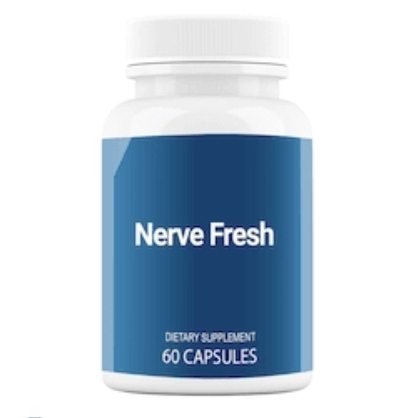
To Reduce Stress During Periods
- REDUCE STRESS, ANXIETY AND HEALTHY NERVES
- PROMOTE ENERGY PRODUCTION
- DEEPER AND MORE RELAXING SLEEP
- OVERALL HEALTH AND WELLNESS
- REDUCTION IN PAIN
Ayurvedic Oils and Massage:
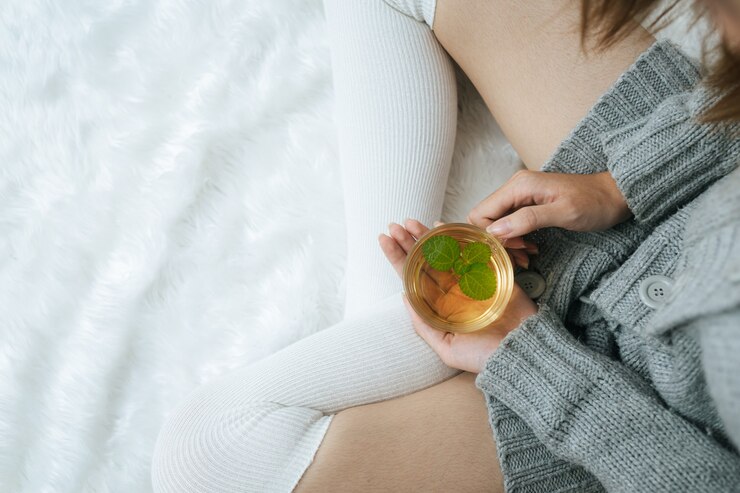
- Sesame Oil: Massaging the lower abdomen and lower back with warm sesame oil (or infused with warming herbs like ginger or ajwain) can help relax muscles and reduce cramping.
- Castor Oil Packs: Applying a warm castor oil pack to the abdomen may help improve circulation, reduce inflammation, and alleviate pain.
Yoga and Exercise:
- Specific Yoga Poses: Gentle yoga poses that focus on stretching the abdomen and pelvic area, such as Child’s Pose (Balasana), Cat-Cow Pose (Marjaryasana-Bitilasana), and Reclining Bound Angle Pose (Supta Baddha Konasana), can help relieve tension and improve circulation.
- Pranayama (Breathing Exercises): Deep breathing exercises like Nadi Shodhana (alternate nostril breathing) or Bhramari (bee breath) can help calm the mind and reduce stress, which may alleviate menstrual pain.
Lifestyle Recommendations:
- Rest and Relaxation: Taking time to rest during menstruation and minimizing stress can help balance hormones and reduce pain.
- Avoiding Cold: Ayurveda advises avoiding exposure to cold drafts or cold foods during menstruation, as these can aggravate Vata dosha and increase discomfort.
Ayurvedic Formulations:
- Menstrual Support Formulations: Ayurvedic pharmacies offer specific formulations (like Menstricare or Stri Rasayan) designed to support menstrual health and alleviate symptoms like cramping and bloating.
Summary: Consulting with an experienced Ayurvedic practitioner is recommended before starting any new herbal regimen or treatment, especially if you have existing medical conditions or are taking medications.
3. Homoeopathic remedies
Homeopathy offers several remedies that can potentially relieve bad period cramps. Remedy depends on the various symptoms as they differ from person to person.. Here are some common homeopathic remedies used for menstrual cramps:
Magnesia phosphorica (Magnesia phos):
- This remedy is often indicated for sharp, shooting pains that are relieved by warmth and pressure. Cramps may be accompanied by shooting pains down the thighs.
Caulophyllum thalictroides (Caulophyllum):
- Useful for spasmodic cramps with labor-like pains. The pains may be erratic and changeable, and there may be associated lower back pain.
Belladonna:
- Indicated for intense, throbbing pains that come on suddenly and are worsened by touch or jarring movements. The abdomen may feel hot and sensitive.
Pulsatilla:
- Often prescribed when menstrual flow is scanty and irregular. Cramps are typically erratic, shifting in nature, and are relieved by gentle motion and open air.
Sepia:
- Suitable for cramps accompanied by dragging, bearing-down sensations in the pelvis. There may be irritability, fatigue, and a feeling of heaviness in the lower abdomen.
Lachesis:
- Used when cramps are worse on the left side and may be associated with excessive bleeding or clotted flow. The pain improves with the onset of flow.
Chamomilla:
- Recommended for extremely painful cramps accompanied by extreme irritability and sensitivity. The pain may be intolerable and can radiate to the back.
Cimicifuga (Actaea racemosa):
- Indicated for sharp, shooting pains that radiate from the lower back to the front of the abdomen. There may be mood swings, nervousness, and headache.
Summary: Homeopathic remedies are chosen based on the totality of symptoms, including the nature of the pain, accompanying symptoms, emotional state, and overall constitution. It’s recommended to consult with a qualified homeopathic practitioner to find the most appropriate remedy for your specific symptoms and health history.
4. Allopathic remedies
Allopathic (conventional medical) methods to relieve period cramps typically involve over-the-counter medications and lifestyle adjustments. Here are some common approaches:
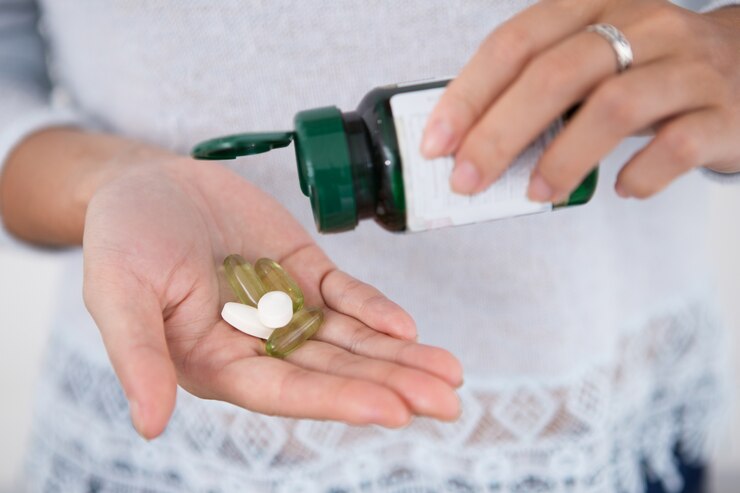
Nonsteroidal Anti-Inflammatory Drugs (NSAIDs):
- Medications like ibuprofen (Advil, Motrin) and naproxen (Aleve) are commonly used to reduce menstrual pain and inflammation. They work by inhibiting the production of prostaglandins, which cause uterine contractions.
Hormonal Birth Control:
- Birth control pills, patches, or hormonal IUDs (intrauterine devices) can help regulate menstrual cycles and reduce cramping. They work by stabilizing hormone levels and reducing the amount of uterine lining that’s shed during menstruation.
Prescription Medications:
- In cases of severe menstrual pain that doesn’t respond to NSAIDs, your healthcare provider may prescribe stronger pain relievers or muscle relaxants.
Heat Therapy:
- Applying heat to the abdomen with a heating pad or warm water bottle can help relax uterine muscles and alleviate cramps.
Exercise:
- Regular physical activity, such as walking or gentle yoga, can improve blood circulation and release endorphins, which are natural pain relievers.
Dietary Changes:
- Eating a balanced diet with plenty of fruits, vegetables, and whole grains, while limiting caffeine and alcohol intake, can help reduce bloating and inflammation.
Hydration:
- Drinking plenty of water can help prevent dehydration and reduce bloating during menstruation.
Stress Management:
- Practicing relaxation techniques such as deep breathing, meditation, or mindfulness can help reduce stress, which may alleviate menstrual pain.
Alternative Therapies:
- Some people find relief from acupuncture or acupressure, which may help balance energy flow and reduce pain perception.
Magnesium supplements: Some studies suggest that magnesium supplements may help reduce the intensity of period cramps.
Summary: It’s important to consult with a healthcare provider before starting any new treatment regimen, especially if your period cramps are severe and disruptive to your daily life. They can help determine the best approach for managing your symptoms based on your individual health needs.
Types of Period Cramps
Primary dysmenorrhea: This is the most common type and typically begins within a few years of starting menstruation. It is caused by natural chemicals called prostaglandins, which trigger contractions of the uterine muscles to help expel the uterine lining. Increased level of prostaglandins leads to more severe cramps.
Secondary dysmenorrhea: This type of cramping is less common and is usually caused by an underlying medical condition, such as endometriosis (where tissue similar to the uterine lining grows outside the uterus), fibroids (noncancerous growths in the uterus), pelvic inflammatory disease, or other conditions affecting the reproductive organs.
Causes Of Period Cramps
Period cramps, are a common discomfort experienced by many individuals during menstruation. These cramps occur in the lower abdomen or pelvis and can range from mild to severe. The main causes of period cramps are related to the physiological processes of the menstrual cycle:
1. Hormonal Fluctuations (Prostaglandins)
The primary cause of period cramps is the release of prostaglandins, hormone-like substances that are produced by the lining of the uterus. Prostaglandins are responsible for triggering uterine contractions, which help shed the uterine lining during menstruation. However, higher levels of prostaglandins can cause stronger and more painful uterine contractions, leading to cramps. Excessive prostaglandin production is the most common cause of primary dysmenorrhea (painful menstruation without underlying medical conditions).
2. Uterine Contractions
The uterus is a muscle, and during menstruation, it contracts to help expel the lining. These contractions are triggered by prostaglandins, and while they are necessary for menstruation, they can cause pain if they are too intense or frequent. The contractions can temporarily restrict blood flow to the uterus, leading to increased pain and cramping.
3. Endometriosis
Endometriosis is a condition where tissue similar to the uterine lining grows outside the uterus, often on the ovaries, fallopian tubes, or other pelvic organs. This abnormal tissue behaves like the uterine lining, thickening and shedding during menstruation, which causes inflammation, pain, and severe cramping. Individuals with endometriosis often experience more intense period cramps, along with other symptoms like heavy bleeding and infertility.
4. Fibroids
Uterine fibroids are noncancerous growths that develop in or on the uterus. Depending on their size and location, fibroids can cause pain, pressure, and more intense menstrual cramps. They can disrupt the normal contractions of the uterus, leading to increased cramping and discomfort during periods.
5. Adenomyosis
Adenomyosis occurs when the tissue that normally lines the uterus (the endometrium) begins to grow into the muscular wall of the uterus. This can cause the uterus to become enlarged and more sensitive, leading to painful menstruation and increased cramping. Like endometriosis, adenomyosis can cause severe pain during periods.
6. Pelvic Inflammatory Disease (PID)
PID is an infection of the reproductive organs, often caused by sexually transmitted infections (STIs) like chlamydia or gonorrhea. Inflammation caused by PID can lead to scarring and changes in the structure of the reproductive organs, which may cause more intense and prolonged period cramps.
7. Cervical Stenosis
In some individuals, the cervix may be narrower than usual, a condition known as cervical stenosis. This can impede the normal flow of menstrual blood and cause increased pressure in the uterus, which can lead to more severe cramps during menstruation.
8. Stress and Lifestyle Factors
Emotional stress, lack of sleep, poor diet, and a sedentary lifestyle can all exacerbate period cramps. Stress can cause the body to release more cortisol, which may increase inflammation and muscle tension, potentially making cramps feel worse. Additionally, a lack of exercise can reduce the body’s ability to cope with pain, while certain foods, like those high in sugar and fat, may contribute to inflammation and worsen cramps.
9. Pelvic Floor Dysfunction
The muscles and ligaments in the pelvic region play an important role in supporting the uterus. Dysfunction in the pelvic floor muscles, often caused by injury, childbirth, or other conditions, can lead to increased pain during menstruation.
While mild cramps are a normal part of menstruation, persistent or severe cramping may indicate an underlying medical condition. It’s important to track your symptoms and consult with a healthcare provider if cramps are disrupting your daily life or worsening over time. Treatments may range from over-the-counter pain relief to hormonal therapies or even surgical interventions, depending on the cause.
FAQ
1Q. What are period cramps?
Period cramps, or dysmenorrhea, are pains in the lower abdomen that occur before or during menstruation. They are caused by the contraction of the uterus as the uterus sheds its lining.
2Q. Why do period cramps hurt so bad?
Period cramps hurt so bad due to various factors, including hormonal imbalances, uterine fibroids, endometriosis, or pelvic inflammatory disease.
3Q. Are there any dietary changes that can help?
Yes! Eating a balanced diet rich in omega-3 fatty acids, fruits, vegetables, and whole grains can help. Reducing salt, sugar, caffeine, and alcohol may also alleviate cramps.
4Q. When should I see a doctor for period cramps?
If your cramps are severe, persistent, or accompanied by other symptoms like heavy bleeding, nausea, or fever, it’s important to consult a healthcare professional.
5Q. Can birth control help with period cramps?
Hormonal birth control methods, such as the pill, patch, or IUD, can help regulate hormones and often reduce the severity of cramps.
6Q. Are there natural remedies for period cramps?
Yes, some natural remedies include acupuncture, essential oils (like lavender or peppermint), and supplements such as magnesium or vitamin E.
7Q. Can stress impact period cramps?
Yes, stress can exacerbate cramps. Practicing relaxation techniques like meditation, deep breathing, or mindfulness can help manage stress and reduce pain.
8Q. How long do period cramps usually last?
Period cramps typically last from a few hours to a couple of days at the start of your period, but this can vary from person to person.
9Q. Is it normal to have very painful periods?
While some discomfort is normal, very painful periods (dysmenorrhea) are not. If you experience debilitating pain, it’s best to consult a healthcare provider for further evaluation.
10Q. What is a period flu?
Period flu refers to the flu-like symptoms some individuals experience before or during menstruation. These symptoms can include fatigue, headaches, body aches, chills, nausea, and mood swings. It is believed to be linked to hormonal fluctuations, particularly changes in estrogen and progesterone levels during the menstrual cycle.
11Q. How to treat period flu?
To treat period flu, manage symptoms with over-the-counter pain relievers like ibuprofen or acetaminophen for headaches and body aches. Stay hydrated, rest, and use a heating pad for cramps. Eating balanced meals and light exercise can also help alleviate discomfort. Consult a doctor if symptoms worsen.
12Q. Where are period cramps located?
Period cramps are located typically in the lower abdomen, just below the belly button. They can also radiate to the lower back, hips, and thighs. The intensity of the pain varies, with some experiencing sharp, throbbing sensations or a dull ache as the uterus contracts during menstruation.
13Q. What foods help with period cramps?
Foods help with period cramps rich in magnesium, like leafy greens, nuts, and seeds, can help reduce muscle cramps. Omega-3 fatty acids found in fish, like salmon, alleviate inflammation. Additionally, antioxidants in berries, and complex carbs from whole grains, can help stabilize blood sugar levels, easing period cramps and discomfort.
Conclusion
Although various heat therapies, dietary changes, yoga, exercises and many more ayurvedic and homoeopathic remedies explains well “How To Relieve Period Cramps” to many. But if your period cramps are severe and not relieved by these methods, or if they significantly interfere with your daily activities, it’s a good idea to consult with a qualified specialist. They can help determine if there’s an underlying condition causing your pain and discuss other treatment options that may be more effective for you.

She is a teacher, writer and passionate advocate for holistic health and well being. With a deep interest in the interconnectedness of body, mind and soul she has dedicated years to exploring and understanding the many facets of wellness.
